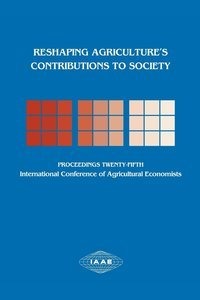
Liknande böcker
From Columbus to ConAgra : Globalization of Agriculture and Food
Bok av Alessandro Bonanno
The Chinese gooseberry was a minor fruit until New Zealanders, tagging it with a catchier name, began an aggressive global marketing campaign. Soon, transplanted to Italy, France, Spain, Chile, and California, the fuzzy little fruit with the bright green interior was known the world round and the kiwi production war was on. Globalization of food is not a new phenomenon. Columbus and his contemporaries helped open worldwide trade routes for the distribution of all types of goods. Yet over the last two decades, globalization has completely revolutionized the commercial production and marketing of kiwifruit and countless other consumer goods. Combining current theory on globalization with revealing case studies, the authors of this insightful collection tackle fundamental questions about the changing agricultural and food system in the era of ConAgra and other large transnational corporations. They look at the structure and operations of these new corporate giants, the state's influence in the global system, innovations in scientific research and technology, the roles of producers and consumers, and regional development. In the process, they take a look at why the winners and losers--countries, regions and even ethnic groups that ebb and flow within a vacillating global system--are constantly changing. Without question, globalization has become a hotly contested topic, as evidenced by the recent NAFTA debates and by a growing body of critical literature produced by economists, sociologists, historians, and geographers. The authors of From Columbus to ConAgra, writing at the cutting edge of these debates, suggest an emerging consensus to guide future research. Globalization, they conclude, will likely continue its expansion within the context of a new multinational division of labor that may drastically alter the main axes of international power. In an increasingly interdependent world, such shifts will affect life in every society and, for that reason, must be better understood. This book offers an important first step toward that goal.
Visa pris inkl. frakt Inkl. frakt
From Columbus to ConAgra : Globalization of Agriculture and Food
379 kr
Finns i lager
From Columbus to ConAgra
387 kr
Finns i lager







